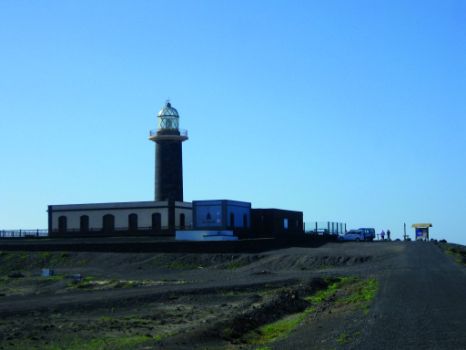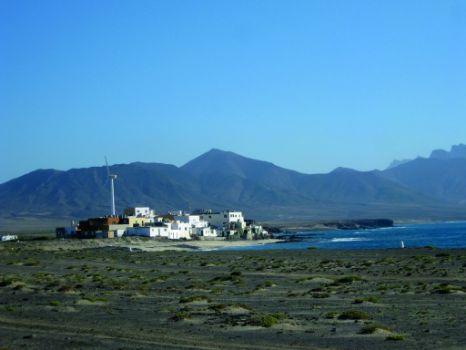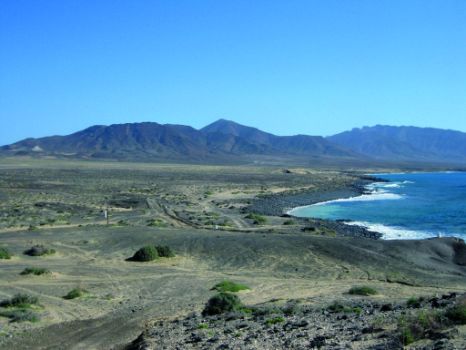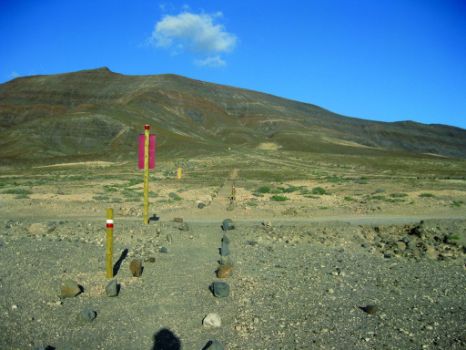Net of Natural
Trails

Stage 9: Morro Jable - Punta de Jandía
Description
Towards the Southern Lighthouse
The trail approaches Punta de Jandía, the southernmost tip of the island, through the vast Tableros plains that make up the coastal terrace on the west side of the Mosquitos valley, past small cliffs and ravines, until the path reaches a dirt road that leads to the lighthouse.

This leg of the journey begins on the terraces of Morro Jable, in a southerly direction, until we reach some stairs that lead to a lookout where we can enjoy a magnificent view of the beach and the Morro Jable lighthouse. We then climb to the northwest, leaving behind us the urban area, and we walk past a number of information signs about this Nature Trail, taking a path that ascends a hill, from whose summit we can see the Morro Jable harbour.
We will follow the trail until the road takes a 90 degree turn to the left and crosses the road to Punta de Jandia, close to the beginning of a short trail leading to Cofete: PR FV 55. We will go along the main road, through the wide plains of Tableros de Peñas Blancas and Casa de la Señora, until we reach a resting area and, finally, we come to Casas de Jorós; of particular interest here are the large fields that used to be dedicated to growing tomato plants, but have since been abandoned.

A place we should not miss is the viewpoint on the Cofete arc; be advised though that the climb is hard and is detours several kilometers from the Nature Trail. From this viewpoint hikers can enjoy an excellent view of the coast of Cofete. We will reach this viewpoint by following a track that links Punta Morro with Jable Jandia, and by making a detour along another path on the right side of the trail, past Casas de Jorós, which will takes us to the viewpoint.
Continuing along out trail, we will go along the skirt of Jorós Mountain, approaching the coast through the valley of Mosquitos. A thriving population of Jandía cactus (Euphorbia handiensis), can be seen in this area, since this is an endemic plant, exclusive to the southern part of the island.
From this point, the road runs about 10 km along a track parallel to the coast. We will go past small cliffs and some ravine mouths, as well as a number of beaches which will offer us an ideal opportunity to freshen up before we reach a sector shared with path FV PR 56, shortly before we come to the country houses at El Puertito.

This short-distance route ends in this small town, also called El Puerto de la Cruz, in which a single windmill stands out in the landscape. El Puertito is the most populated village in the natural park of Jandía, and its original inhabitants were fishermen from El Cotillo or Corralejo who came to this area to spend the winter.
From El Puertito, we will continue along the main road, walking about 1 mile down the dirt road that reaches the lighthouse at Punta de Jandia, where we can visit the Lighthouse Museum.
Puntos de interés
Infrastructure
Municipality
Orography
Profile
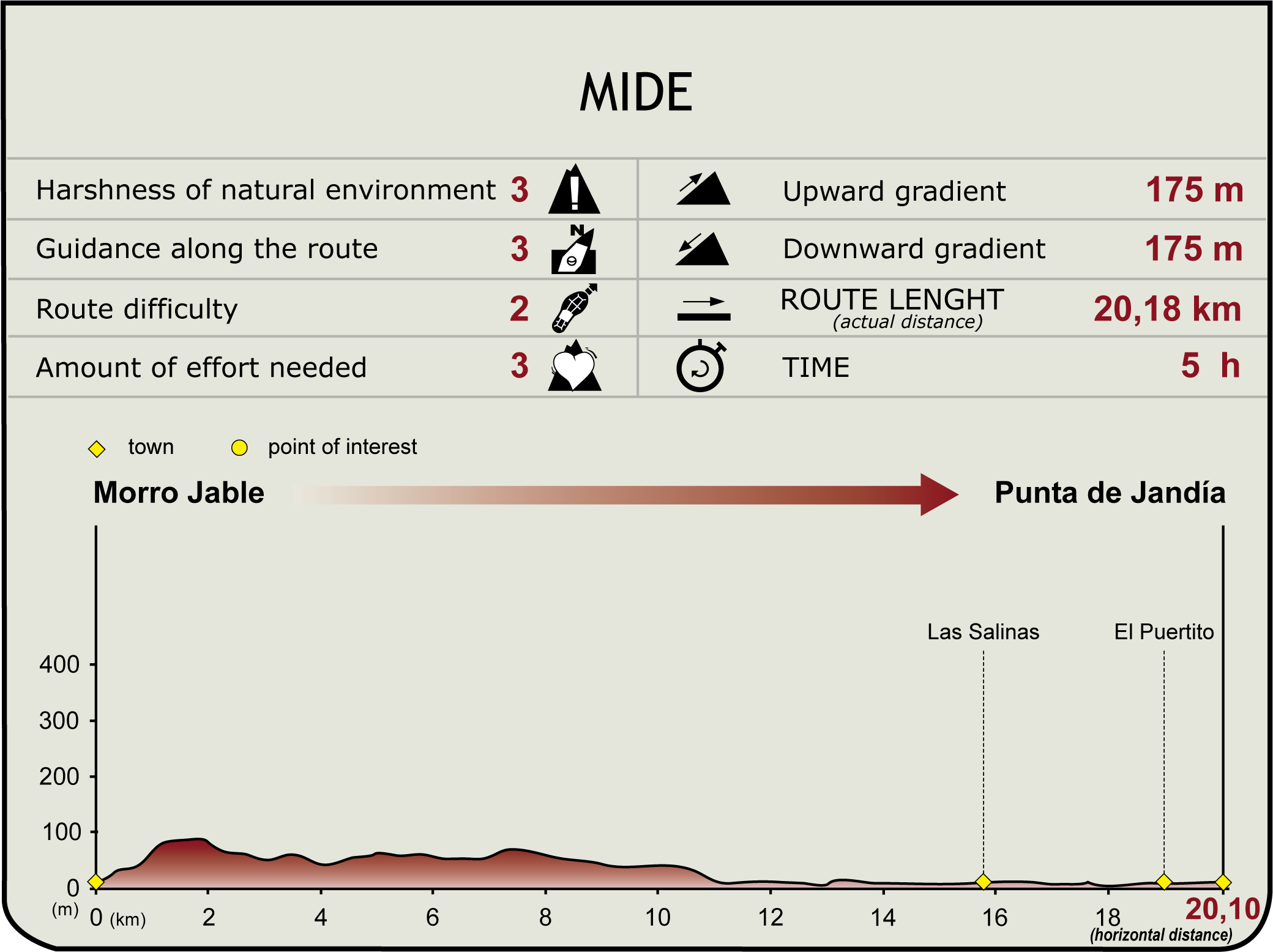
(Calculated according to the MIDE criteria for an average excursionist with a light load)
Highlights
Further information
Fauna and Flora
The sparse vegetation in the area between Morro Jable and Punta de Jandía consists mainly of shrubs such as aulaga (Launaea arborescens) and Barilla or grasslands of common ice plant (Mesembryanthemum crystallinum), formerly used for the manufacture of soaps. We also find some tarayal trees (Tamarix canariensis) and palm trees (Phoenix canariensis), but the most characteristic plant of the area is a cactus called cardon de Jandía (Euphorbia handiensis), which is an endemic plant exclusive to the southern part of Fuerteventura which prospers particularly in the Jorós area and the valley of Mosquitos. In the vicinity of the lighthouse at Punta de Jandía, we can also see marine thyme (Frankenia ericifolia) and Saharian sea grapes (Zygophyiium gaetuium).
With regard to wildlife, the area is noted for its ornithological interest, with species such as the common kestrel (Falco tinnuncuius dacotiae), the aguililla or Canary Islands common buzzard (Buteo buteo insuiarum), the raven (Corvus corax), the trumpeter finch (Bucanetes githagineus) and the Canary Islands stonechat (Saxicoia dacotiae). The entire area has been named a Special Protection Area for Birds (SPA).



